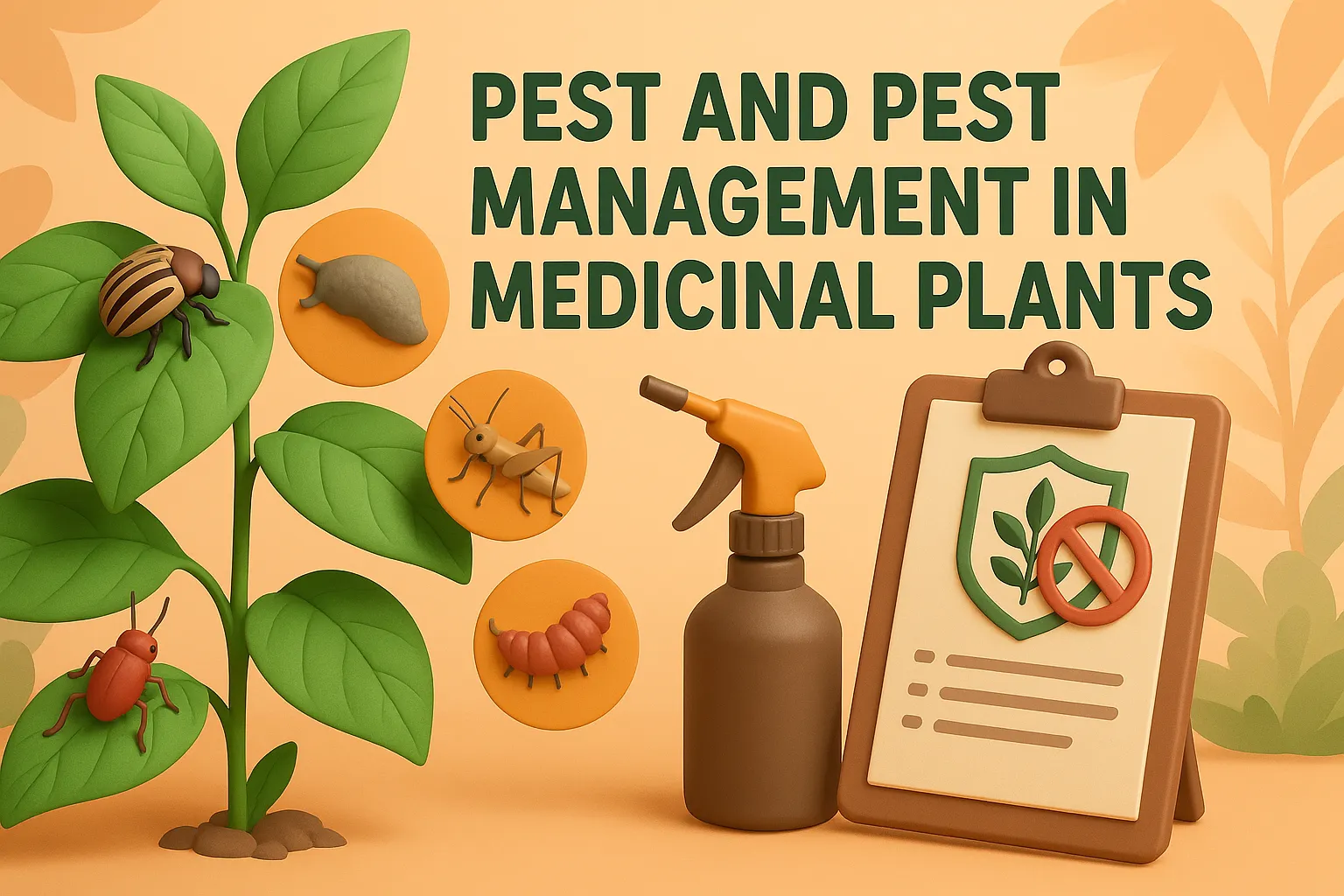Pest and Pest Management in Medicinal Plants focus on controlling insects and diseases using biological, cultural, and organic methods.
What is a Pest?
- Pests are organisms that cause damage to crops, livestock, and other economically or ecologically important organisms.
- They reduce yield, lower quality, and increase production costs, threatening sustainability.
Types of Pests:
- Insects – Ants, mosquitoes, termites, fleas, and more.
- Rodents – Rats, mice, and squirrels that damage crops and spread diseases.
- Birds – Pigeons, seagulls, and sparrows that can harm plants.
- Wildlife – Raccoons, skunks, and possums that invade farms.
- Weeds – Unwanted plants that compete with crops for nutrients.
- Microorganisms – Bacteria, fungi, and viruses causing plant diseases.
- Others – Bed bugs, moths, and beetles that affect stored plant materials.
Pest Management in Medicinal Plants
- Effective pest management is crucial for ensuring the safety and quality of medicinal plants. Various methods help control pests while maintaining sustainability.
Methods of Pest Management:
-
Cultural Control:
- Crop rotation and intercropping to disrupt pest life cycles.
- Sanitation by removing dead plant material to reduce pest habitats.
-
Mechanical Control:
- Traps, barriers, and handpicking to physically remove pests.
-
Agricultural Control:
- Proper irrigation and soil management to enhance plant resistance.
- Use of resistant plant varieties.
-
Biological Control:
- Introducing natural predators, such as ladybugs for aphids.
- Using microbial agents or biopesticides to suppress pest populations.
-
Chemical Control:
- Using pesticides approved for medicinal plants while following safety regulations.
-
Integrated Pest Management (IPM):
- A combination of cultural, mechanical, biological, and chemical methods to achieve effective and environmentally safe pest control.
Click Here to Watch the Best Pharma Videos

